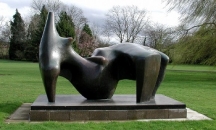Public art disappearing before our eyes
Date uploaded: December 15, 2015
Historic England is launching a campaign to raise awareness of how much art is being lost, whether metal sculptures being stolen and sold for scrap or architectural friezes being deliberately ripped down by developers. They have stated that "postwar public art in England is disappearing before our eyes”, whether through wilful destruction, accidental loss, theft or sale. While many works have been destroyed, there are hopes that some could still be returned.
The organisation’s chief executive, Duncan Wilson, said there was a whole category of art that had been unjustly ignored over the years. He said: “We may have lost more than we know and we feel now is the time to do something about it.
“A lot of these pieces were commissioned against a background of optimism, good intentions, civic values and a lot of them were of very fine quality. Unfortunately, you lose things you don’t understand or treasure and perhaps, because nobody was standing up for this kind of art, the result is some of it has been lost. This is a call to arms for all of the public to get involved.”
Historic England has listed nearly 40 works that have been lost, destroyed, stolen or sold. They include famous cases such as the theft 10 years ago of Henry Moore’s two-tonne Reclining Figure from the 72-acre Henry Moore Foundation estate in Hertfordshire. The most likely reason for the theft of a work estimated at £3m was that it was melted down for scrap for about £1,500.
Other examples include:
- A Bernard Meadows bronze abstract sculpture of a cockerel commissioned in 1959 for a fountain in the grounds of Crown Woods school in Eltham, south London. It was sold at auction in 2004 for £18,800.
- The Watchers by Lynn Chadwick, 1960, in the grounds of the University of Roehampton, south-west London. One of three figures that make up the piece was stolen in 2006, with police estimating it would take at least eight people to carry. Its whereabouts are unknown.
- Trewin Copplestone’s four 2 metre-high fibreglass bulls were placed on the side of Birmingham’s Bull Ring shopping centre in 1963. When the centre was rebuilt, the bulls disappeared.
- The Cambridge piece by Barry Flanagan, an abstract sculpture installed on Laundress Green in Cambridge in 1972. It was badly received, got a drubbing in the local press and was heavily vandalised by the public, including students. After several attacks it was vandalised beyond repair.
To read the full Guardian article by clicking here.

